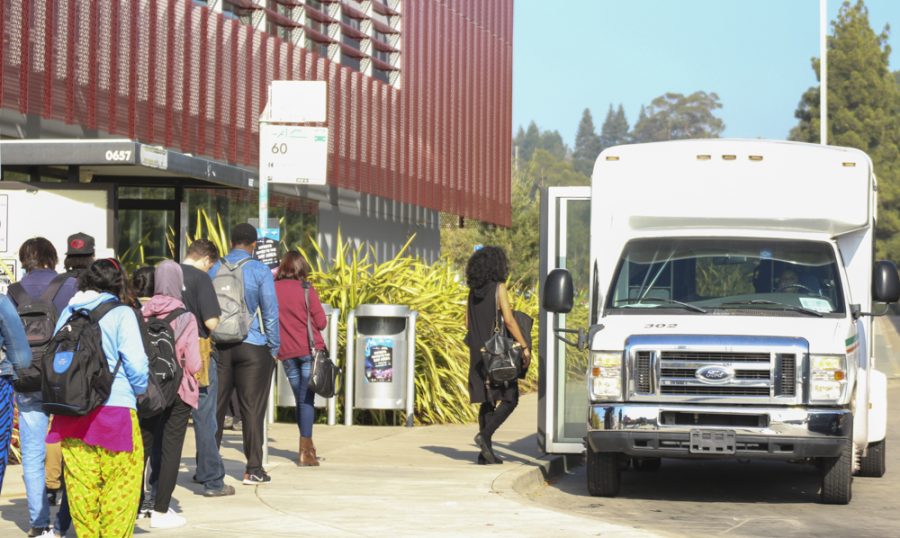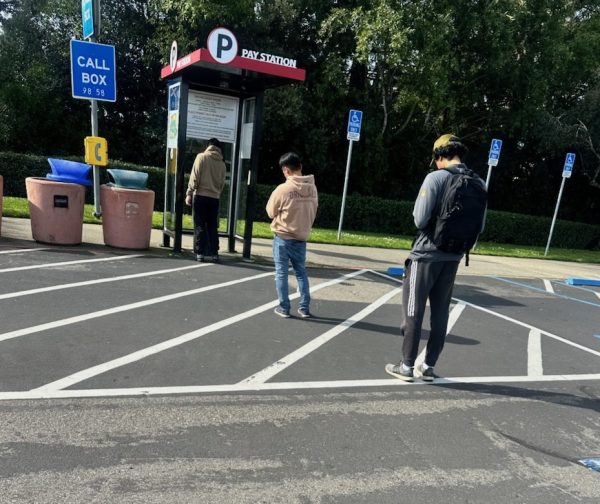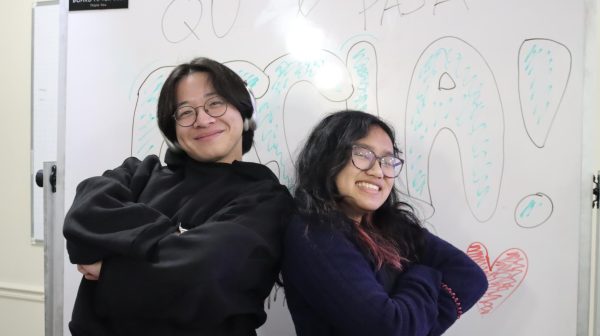New shuttle aims to connect campus to housing
Fall transfer student Rohit Reddy uses a new university loop shuttle up to five times a day. He travels back and forth from his classes at the science building to his dorm at University Village, and then back up to the Dining Commons for meals. The walk between his dorm and campus takes up to 30 minutes each way, so the shuttle is a critical time-saver for Reddy, who often has multiple classes every day. “I can’t imagine not having a shuttle like this,” Reddy said.
The new campus shuttle makes a loop through campus every 15 minutes, dropping off and picking up passengers at eight stops. It starts at University Village on Carlos Bee and stops at the East Loop by the Music Building, in front of the A&E building, at the Student & Faculty buildings, and then the Dining Commons/Rec & Wellness Center. It then turns the corner to stop at Meiklejohn Hall, the Library and then the PE building by parking Lot M before heading down the hill back to University Village.
The shuttle runs from 7 a.m. to 7 p.m., Monday through Thursday. The service is additional to the existing shuttles, which travel only to the Hayward and Castro Valley BART stations. “We decided that because less students come to campus on Fridays that the usual shuttle service could handle the Village students that need to get to the Dining Commons on Friday,” said Derrick Lobo, director of Parking and Transportation services at CSU East Bay. “Unlike the students who live at the dorms on campus, these students had no quick way to get to the Dining Commons.”
Lobo said the parking and transportation department provides five free bikes and zipcars at the Village, but there was a need for something more.
Prior to fall quarter, there was only one shuttle stop on the entire upper campus that picked up riders, yet this shuttle only traveled to the Hayward BART station. The new shuttle loop, which began the first day of the fall quarter, picks up riders at every stop.
Early last year, the Parking and Transportation department met with leaders from the student committee at University Village and Martin Castillo, the acting vice president of Student Affairs, and began the planning process.
Students at University Village complained they had no easy way to get to their meals because the dorms have no kitchens and the Dining Commons are located across campus. The committee suggested a shuttle service for students who rely on the Dining Commons for all of their meals but weren’t able to board the crowded BART shuttles in the evening or mornings or wait for the mid-day shuttles, which only run hourly.
The new shuttle comes at the perfect time, as the number of students living in the Village dorms has increased this term. “We have more students living on campus than ever,” said Jim Zavagno, associate vice president of the Facilities Development and Operations Department on campus. “Occupancy has gone from two to three in many dorms,” he said.
The committee initially requested a service that provided multiple stops on campus for both pickup and dropoff. Lobo’s department came up with a plan with proposed stops, and it was approved by Student Services and campus Vice President Julie Wong and was put into place once the funds were approved. “Because we already have a contract with TransMetro in place, we were able to get this done within a month of submitting the plan,” Lobo said. TransMetro is the transportation company employed by CSUEB.
The cost for both the shuttle and driver is roughly $80,000 a year and is funded by the Parking and Transportation Services Department, which in turn pays for it through monies collected by parking violations. The drivers and shuttles are on a lease contract with Transmetro, which also operates the shuttles for other campus transportation services to BART. Dominga, the new shuttle’s regular driver, has been driving for the campus through TransMetro for 17 years.
The existing shuttle system on the campus has been through a series of adjustments over the years. For a short period a few years ago, they allowed pick-ups at multiple stops on campus for the BART-bound shuttles, but Lobo said it backfired: too many people were trying to board full shuttles, and would not take no for an answer. “We had fights breaking out,” he said.
The loop shuttle has twenty seats, but because they operate strictly on campus, passengers are allowed to stand if seats are not available. In the morning, there are often more passengers than seats. Lopez is glad they allow people to stand, unlike the BART shuttles, which are often already full when they come up the hill in the morning and therefore don’t take on passengers at University Village.
“In the morning it gets crowded, but it’s better than other shuttles because we don’t have to wait an hour,” said Melissa Lopez, a student who lives at University Village.
This is the first time in seven years the campus has offered multiple pick-up stop service, according to Lobo. He hopes the service will take pressure off of the BART shuttle and serve students on campus who want to use it just to get around.
Monica Chavez, who has night classes, wishes the shuttle would run later. “There’s not a lot of people walking on campus after dark and it feels dangerous,” she said. “I really like it though. I just saw the signs by the stops, I didn’t know about it before a couple of weeks ago.”
New permanent signs and schedules for the eight shuttle stops are ready, but the facilities department has yet to install them, according to Lobo. Temporary signs on wooden saw-horses currently mark the stops.
“We anticipate the service will be used by everyone on campus to a degree, but it is primarily being provided for the University Village students,” said Lobo. However, the campus does not want the shuttle service to keep people from getting their exercise.
“The shuttle is not meant to replace walking,” he said.
More information about the shuttle service can be found at csueastbay.edu/sa/parking/alt-trans/csueb-shuttle.htm







